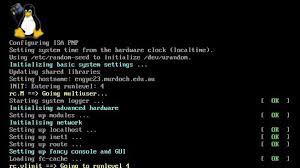Enhancing Business Efficiency with a Contact Management System
The Importance of a Contact Management System
Managing contacts is a crucial aspect of any business or organisation. A contact management system is a tool that helps businesses organise, store, and track their interactions with customers, clients, suppliers, and other stakeholders. It serves as a centralised database for all contact information, communication history, and important details that enable effective relationship management.
Benefits of Using a Contact Management System:
- Organisation: A contact management system allows you to keep all your contacts in one place, making it easy to access and update information as needed.
- Efficiency: By having a centralised database, you can quickly retrieve contact details, track interactions, and follow up on leads or inquiries without wasting time searching through multiple sources.
- Improved Communication: With all communication history stored in one place, you can provide better customer service by referring to past interactions and tailoring your communications accordingly.
- Analytics: Many contact management systems offer analytics tools that help you track engagement levels, monitor performance metrics, and make data-driven decisions to improve your relationships with contacts.
- Automation: Some systems allow for automation of certain tasks such as sending follow-up emails or reminders, saving you time and ensuring no important interactions slip through the cracks.
Choosing the Right Contact Management System:
When selecting a contact management system for your business, consider factors such as scalability, integration capabilities with other software tools you use, user-friendliness, security features to protect sensitive data, and customisation options to tailor the system to your specific needs.
In conclusion, implementing a contact management system can streamline your operations, improve customer relationships, boost efficiency, and ultimately drive business growth. It is an essential tool for any organisation looking to manage their contacts effectively in today’s fast-paced digital world.
Effective Contact Management: 7 Essential Tips for Optimal Organisation and Security
- Regularly update contact information to ensure accuracy.
- Categorise contacts into different groups for easier management.
- Use tags or labels to identify specific characteristics or preferences of contacts.
- Implement a system for tracking interactions and communications with each contact.
- Ensure data security and compliance with data protection regulations when storing contact information.
- Integrate the contact management system with other tools such as email and calendar for seamless workflow.
- Regularly clean up and remove outdated or irrelevant contacts from the system.
Regularly update contact information to ensure accuracy.
It is essential to regularly update contact information within your contact management system to maintain accuracy and relevance. By keeping details such as phone numbers, email addresses, and job titles up-to-date, you ensure that your interactions with clients, customers, and stakeholders are based on the most current information available. This practice not only helps in avoiding communication errors but also demonstrates your commitment to providing a professional and reliable service. Regular updates to contact information contribute to effective relationship management and enhance the overall efficiency of your business operations.
Categorise contacts into different groups for easier management.
Categorising contacts into different groups is a valuable tip for enhancing the efficiency of a contact management system. By organising contacts into distinct groups based on criteria such as demographics, purchasing history, or engagement level, businesses can streamline communication, tailor marketing strategies, and provide more personalised interactions. This segmentation allows for targeted messaging and ensures that the right information reaches the right audience, ultimately improving customer relationships and increasing overall effectiveness in managing contacts.
Use tags or labels to identify specific characteristics or preferences of contacts.
In a contact management system, utilising tags or labels to identify specific characteristics or preferences of contacts can greatly enhance your ability to tailor interactions and communication effectively. By assigning tags such as “VIP customer”, “potential lead”, or “technical expert” to contacts, you can categorise them based on their unique attributes. This allows for targeted messaging, personalised engagement, and streamlined organisation of your contact database. Tags or labels serve as valuable markers that enable you to quickly identify and segment contacts according to their individual traits, ensuring more meaningful and efficient interactions that ultimately strengthen relationships and drive business success.
Implement a system for tracking interactions and communications with each contact.
To enhance your contact management system, it is advisable to implement a structured method for tracking interactions and communications with each contact. By diligently recording details of conversations, emails, meetings, and any other engagements, you can build a comprehensive history that provides valuable insights into each relationship. This systematic approach not only fosters better communication but also enables you to tailor your interactions based on past engagements, ultimately strengthening your connections and improving overall relationship management.
Ensure data security and compliance with data protection regulations when storing contact information.
It is essential to prioritise data security and compliance with data protection regulations when storing contact information in a contact management system. By implementing robust security measures and adhering to relevant data protection laws, businesses can safeguard sensitive contact details from unauthorised access or breaches. Ensuring data security not only protects the privacy of individuals but also helps build trust with customers and stakeholders. Compliance with regulations such as GDPR demonstrates a commitment to ethical practices and responsible handling of personal data, which is crucial in today’s digital landscape where privacy concerns are paramount.
Integrate the contact management system with other tools such as email and calendar for seamless workflow.
Integrating the contact management system with other essential tools like email and calendar can significantly enhance workflow efficiency. By seamlessly connecting these systems, users can access contact information, schedule appointments, and send emails all from one platform. This integration not only saves time by eliminating the need to switch between multiple applications but also ensures that all communication and scheduling tasks are streamlined and coordinated. Ultimately, this tip promotes a more cohesive and productive work environment by centralising key functions within the contact management system.
Regularly clean up and remove outdated or irrelevant contacts from the system.
It is essential to regularly clean up and remove outdated or irrelevant contacts from your contact management system. By maintaining a clean and up-to-date database, you ensure that your interactions are targeted and meaningful. Removing obsolete contacts not only declutters your system but also improves data accuracy and enhances the overall efficiency of your communication efforts. Regularly reviewing and updating your contact list helps you focus on engaging with the right audience, leading to more effective relationship management and better outcomes for your business or organisation.












